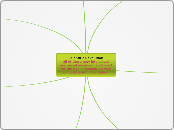Scientific Revolution
all of these new intelectual
and social movements allowed
for the Age of Reason, as well
as the Scientific Revolution.undefined
Scientific Instruments
The first microscrope was invented by Zacharias Janssen.
Anton Leeuwenhoek was the first to observe bacteria swimming in tooth scrapings through a microscope. He also saw red blood cells for the first time. Through his research he was able to disproove spontanteous generation.
Evangelista torricelli was the first to devolop a mercury barometer, which measured atmospheric pressure and predicted weather.
Gabriel Fahrenheit devoloped the first thermometer that used mercury inside glass. He created a temperature scale or Fahrenheit; another scientist created a scale that we know today as Celsisus.
Medicine and the
Human Body
Many physicians had accepted the facts about human anatomy from the ancient Greek physician named Galen.
Andreas Vesalius prooved Galen wrong by disscting a corpse rather than relaying on other animal's anatomy and the idea that human anatomy was similar in other animals. ANdreas also made a book that containted detailed drawings of human organs, bones, and muscles.
William Harvey did research on the human heart and found that the heart acted as a pump to circulate blood throughout the body. He also learned of the function of blood vessels.
Edward Jenner introduced a vaccine to prevent smallpox by inoculating humans with germs of the cowpox disease: this allowed for permanant protection from smallpox.
Discoveries in
Chemistry
Robert Boyle is the founder of modern chemistry thanks to his laws that explain how the volume, temperatue, and pressure of gas affect each other. This research contradicted Aristotle's idea that claimed the world consisted of four elements- earth, fire, water, and air.
Joseph Priestley seperated one pure gas from air, that was later called oxygen by the scientist Antoine Lavoisier.
Newton Explains the
Law of Gravity
Newton studied mathematics and physics, allowing him to tie together all the theories of prior scientists into one single theory of motion. Which stated that the same force ruled the motions of the planets, the pendulum, and all matter on earth and in space.
Connection between motion on earth and motion in space was referred to as law of universal gravitation. According to this law, every object in the universe attracts every other object; the degree of attraction depends on the mass of the objects and the distance between them.
Though Newton challenged many ideas of the church with his scientific breakthroughs, he was a strong believer that God was the creater of this orderly universe, the clockmaker who had set everything in motion, and we were simply following his plans for us.
A Revolutionary Model
of the Universe
First challenge to scientific thinking was
the doubt in the geocentric theory that
stated the movements of the sun, moon,
and planets. These doubts lead to research
that later prooved that the sun was the
center of the universe and everything else
revolved around it; this was called the
heliocentric theory.
Later discoveries by Galileo prooved
several of Aristotle's ideas in science
to be wrong. Galileo prooved Aristotle's
pendululm idea wrong; prooved Aristole
to be wrong again when he discovered
that all object fall at the same speed;
and also contradicted Aristotle's theory
that the moon and stars were made of a
pure and perfect substance. Galileo also
built his own telescope, and announced
that Jupiter has four moons and that the sun
had dark spots.
Due to new discoveries and scientific
ideas, including those of Galileo, the
Catholic and Protestant leaders became
worried that since these new finding went
against church teachings and authority,
that people would begin to question the
teachings of the church itself.
The Scientific Method
Revolution in scientific thinking allowed for the devolopment of the scientifi method; the scientific method used a logical procedure for gathering an testing ideas through a set process.
Several scientist began to go out and observe the world for themselves, and taking from it their own ideas and conclusions. This method referred to as the experimental method, and was highly urged by Francis Bacon.
Rene Descartes devoloped analytical geometry, which linked algebra and geometry: this created a vital new tool for scientic research, and allowed for research to be prooven true by reason.
Roots of Modern Science
Before 1500, many people along with several scholars decided what was true and false in the world by simply referring to the Bible. Any statment that went against the Bible was wrong, despite the viable evidence.
Some example of discoveries that went along with the bible were: the Earth is the center of the universe, the Earth is unmoving, etc...
With explorers discovering new culutures and animals, the possibility that there were new truths to be found, opened up. New ideas contradicted original beliefs and discoveries by early scholars.
With the begining of the Scientific Revolution new ideas and opinions about the natural world began to be devoloped. These new ideas allowed for astronomy, physics, and mathematics to be taught at college levels.
